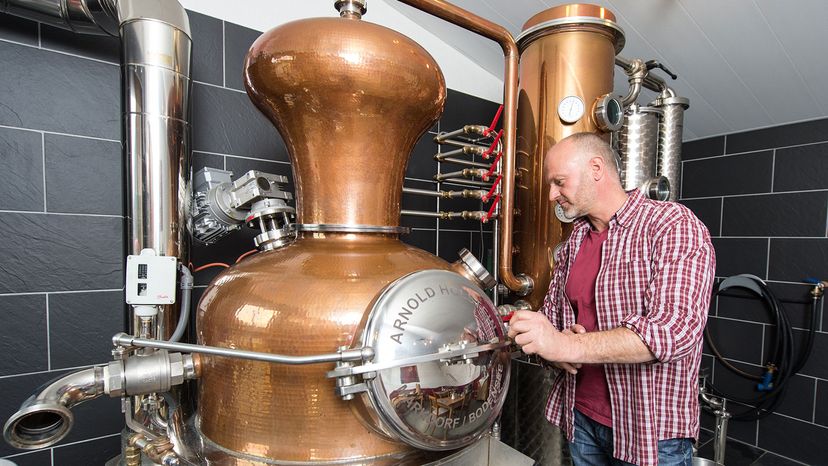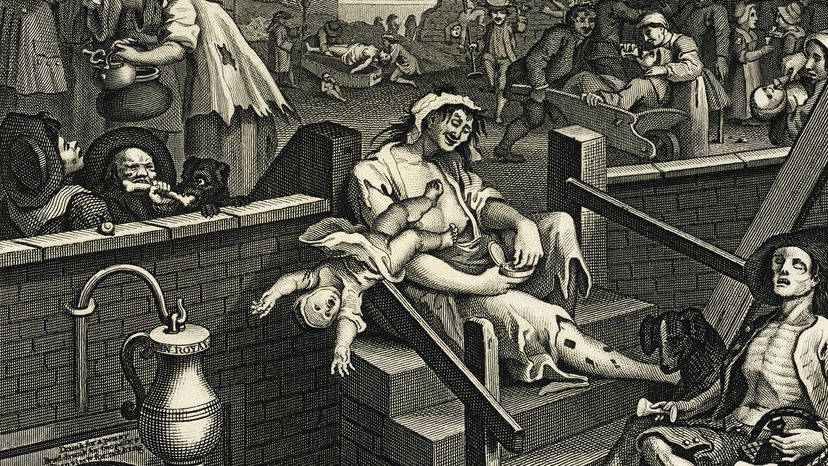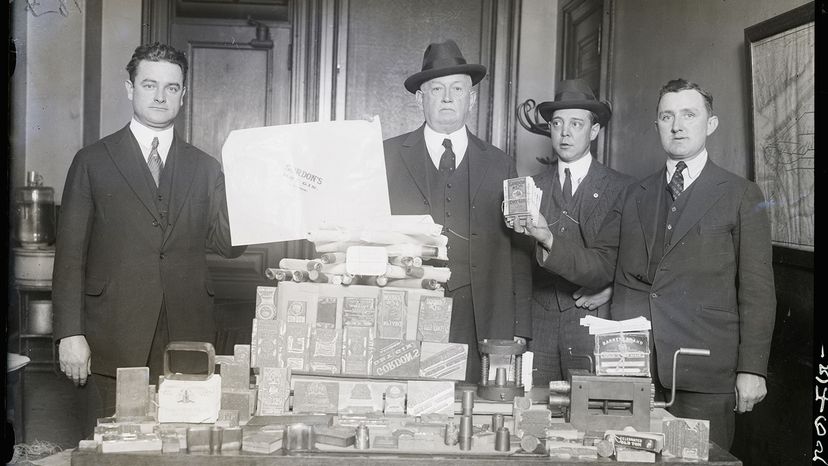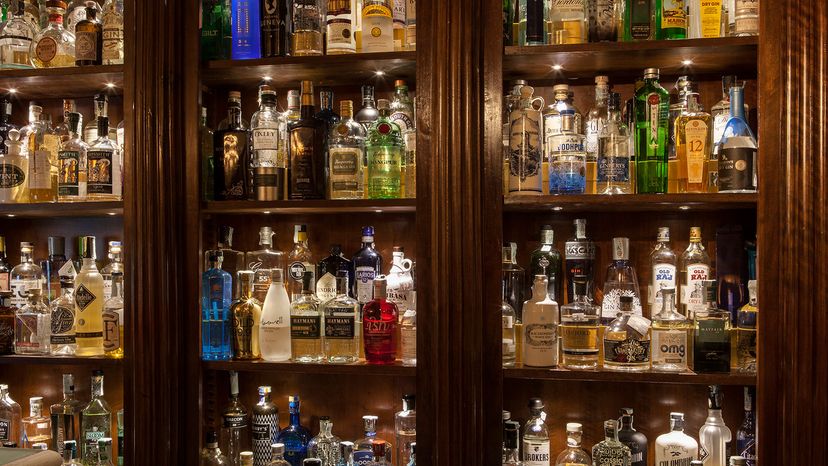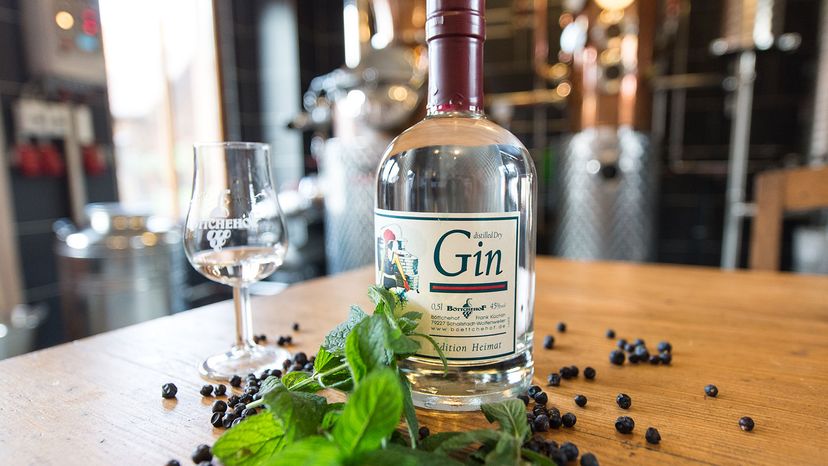
A gin and tonic is one of the world's classic cocktails, but did you know that it was originally created for its anti-malarial properties? And that's not the only gin cocktail with a "health-related" origin story. But before that, gin was once considered so addictive and morally repugnant that some historians compare England's 18th-century "gin craze" to the crack epidemic.
If we have your attention, it's time to learn everything about this ancient juniper-infused spirit that's recently undergone a popular transformation from your grandfather's booze to a trendy, artisinal craft alcohol.
Advertisement
What Is Gin?
Unlike some other spirits, the definition of gin is pretty loose. Traditionally, gin is defined as any distilled spirit that has juniper as the "predominant" flavor. Juniper is an evergreen shrub found around the world and its berries or "cones" are what give gin its distinctly piney, peppery, citrusy, herbaceous kick.
But even that basic definition of gin is now being challenged. Hundreds of artisanal gin distilleries are producing excellent gins that play down the classic (and somewhat divisive) juniper flavor and play up new flavors like rose, cucumber, peach, lavender and dozens of other locally sourced "botanicals."
To make gin, you start with a distilled base spirit (ethyl alcohol that's 96 percent alcohol by volume [ABV]) and then re-distill the base spirit in the presence of botanicals. More on botanicals in a second.
Gin is somewhat unique in that its base spirit can be distilled from any source material. This is different from Scotch, for example, which must be distilled from malted barley, or rum, which is always distilled from sugar cane. While gin is traditionally made with grain-based spirits (barley, wheat, rye, corn, etc.) it can also be made with base spirits distilled from grapes, potatoes, apples, molasses, honey, even milk!
No matter the source material, once a spirit has been distilled to 96 percent ABV, it's lost almost all color and flavor and is considered a "neutral" spirit. What makes a gin a gin is the second step, re-distilling the base spirit in the presence of botanicals, most notably juniper.
Botanicals are any herb, fruit, seed, spice, leaf, peel or root that is used to impart flavor to the gin. Bombay Sapphire gin, for example, is made with 10 different botanicals.
These botanicals can be incorporated into the distilling process in two ways. The first method is to simply add the botanicals directly to the base spirit in the still. This is called steeping and is similar to making a pot of tea. As the base spirit heats up and simmers, oils are released from the botanicals that transmit their flavors into the final product.
The second way is to suspend the botanicals is called vapor infusion. In this method, used by producers like Bombay Sapphire, the botanicals are placed in a basket above the boiling base spirit in the still. As vapor rises, it passes through the collection of botanicals, picking up subtle notes of citrus and spice.
Some distilleries even mix the two methods to produce a distinctive balance of flavors, seeping some botanicals directly in the base spirit and suspending others above.
A third and less-common method is to use a vacuum still. By distilling the base spirit in a vacuum, it lowers the boiling point of the liquid, which allows the botanicals to steep at a lower temperature. Some distillers argue that this gives the final product a fresher flavor.
Types of Gin
If you visit your local liquor store, you'll find lots of different bottles labeled as gin. But because gin isn't tightly regulated, you may have to read the fine print to know what you're getting.
In both the European Union and the United States, a bottle of liquor can be called "gin" if it's made from distilled neutral spirits that are flavored with either natural botanicals, extracts or artificial flavors, and bottled at no less than 80 proof. So, to qualify simply as "gin," the product doesn't technically need to be distilled in the presence of botanicals. Lower-grade gin of this sort is sometimes dismissed by gin purists as "flavored vodka."
The next grade of gin is labeled "distilled gin" because the gin gets its flavors from actually distilling the base spirit in the presence of botanicals (by steeping or vapor infusion), not just by mixing in flavors.
Under the broad category of distilled gin are several distinct types and styles of gin. The best-known is "London dry gin" or simply "London gin." This is the classic British-style gin popularized by brands like Beefeater, Gordon's and Tanqueray. The flavor profile of a London gin is dry (no sugar) and juniper-centric.
Next is Old Tom gin. This is a distilled gin that's much sweeter and more botanically intense than London gin. As we'll see in the history of gin, Old Tom predates London gin and comes from a time when distillers were using sugar and strong botanicals to cover up the flavor of low-quality base spirits.
You might see some gins labeled as Navy strength. This isn't an official designation as much as a colorful nod to gin's history. Back in the 19th century, sailors wanted to test if their gin rations had been watered down, so they would drizzle some gin over a pinch of gunpowder and take a match to it. If the gunpowder lit, then the gin was said to be "Navy strength." Today, Navy strength means a gin that's at least 57.1 percent ABV. Under the EU rules, the alcohol content of gin can be as low as 37.5 percent ABV.
There are also aged gins. These are distilled gins that are aged anywhere from a few weeks to five or 10 years. Aged gin is a relatively new category and distillers are experimenting with the flavor profiles of aging gin in casks that previously held other spirits like vermouth.
You might also see bottles labeled as "Genever Gin," "Geneva" or "Hollands Gin." This style of gin isn't really gin at all, but a precursor of gin that's distilled from a whiskey-like "malt wine" instead of a neutral spirit. Genever is often darker in color and more malty in flavor than gin, but they both share a top note of juniper berries.
To understand the juniper connection and the roots of both genever and gin, let's dive into the fascinating history of gin.
Advertisement
